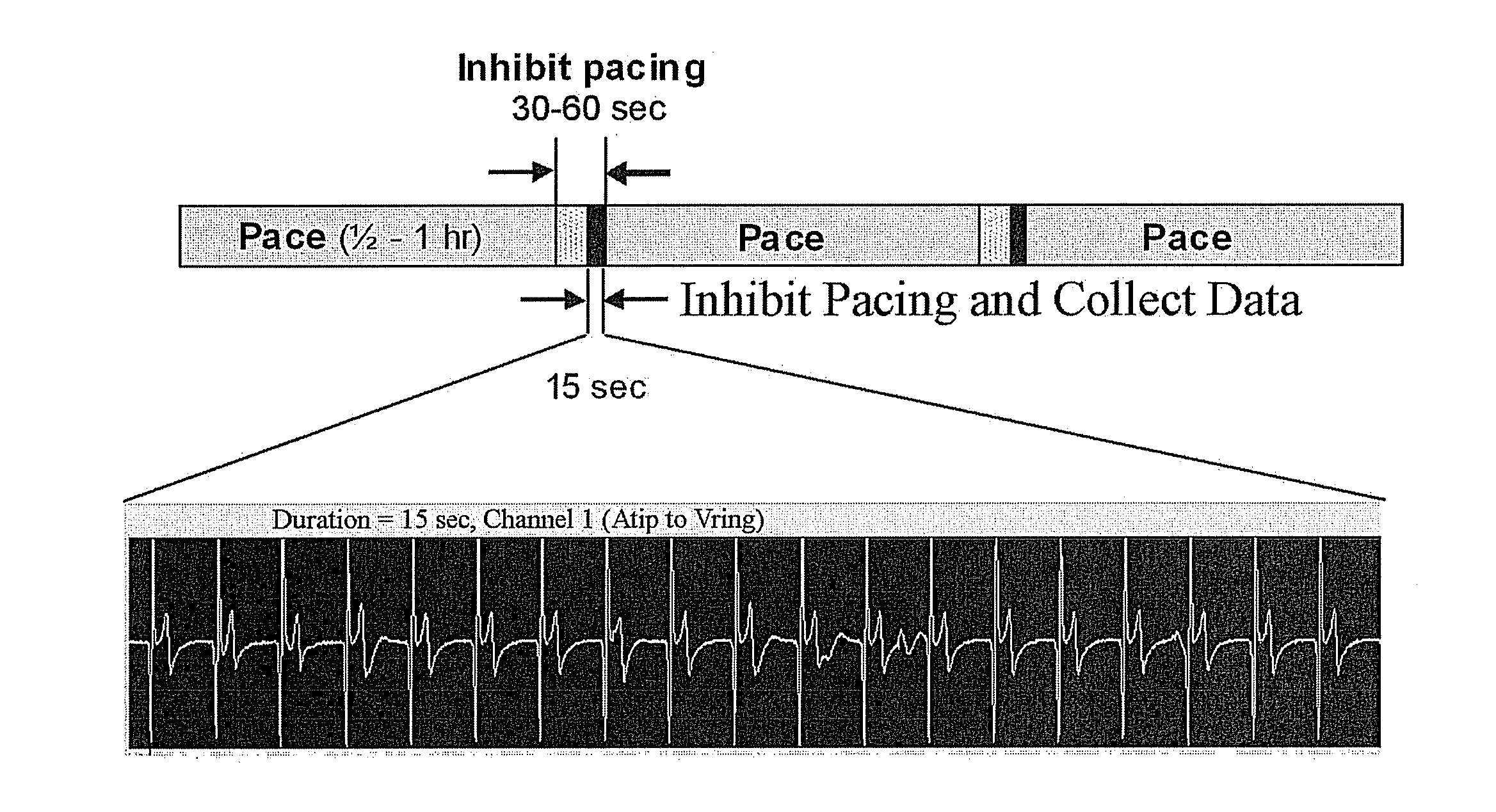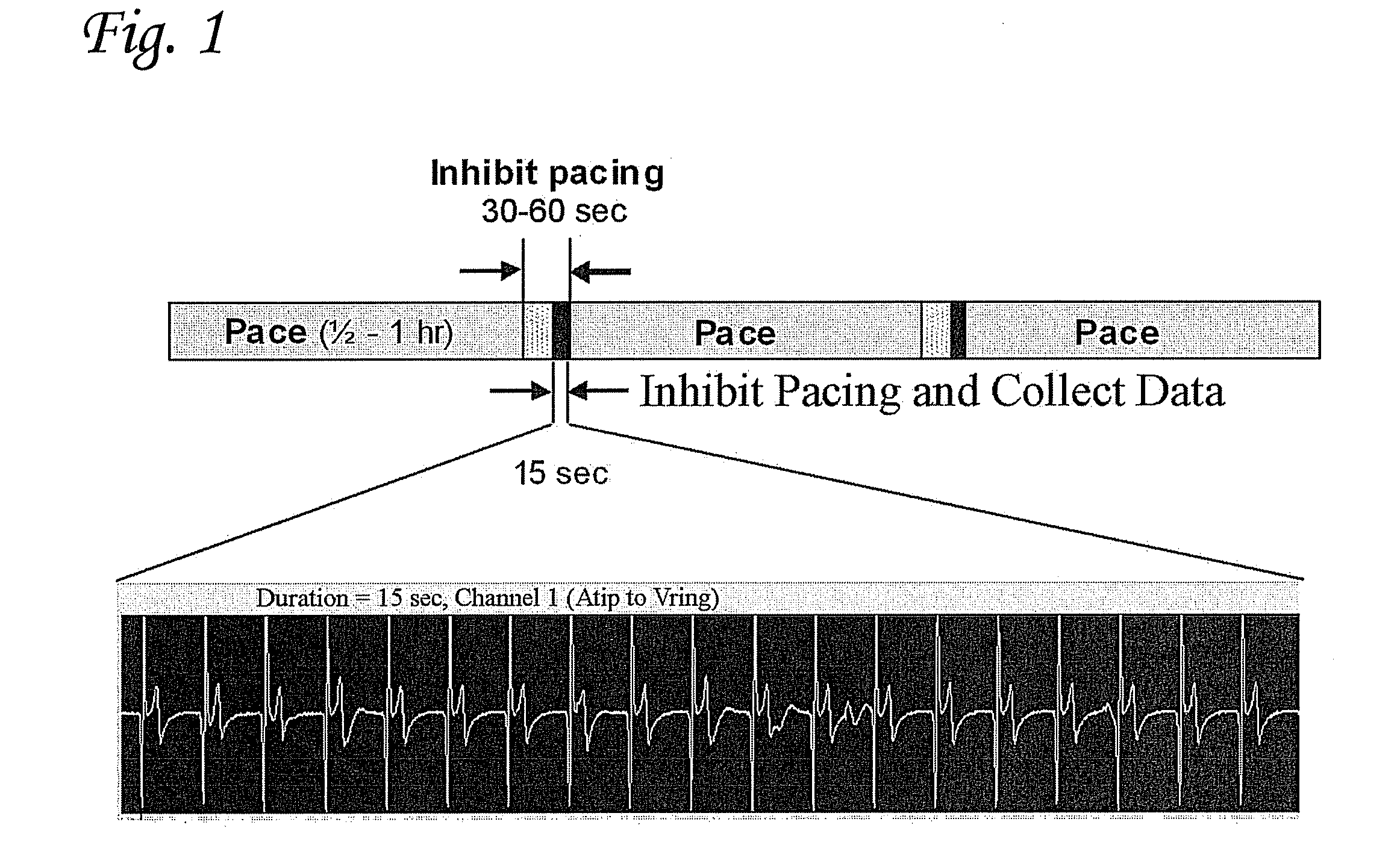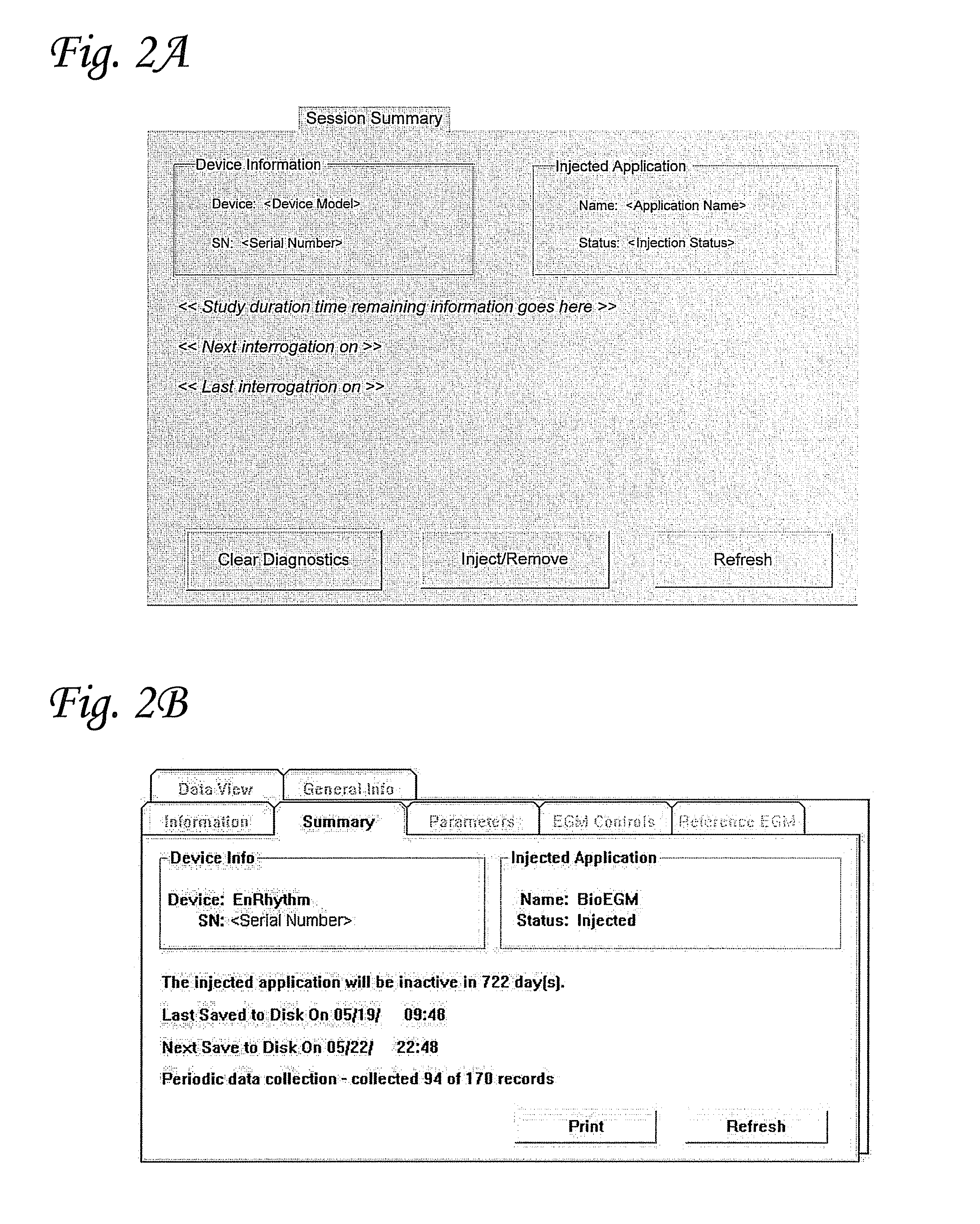System and apparatus to monitor biopacemaker maturation
- Summary
- Abstract
- Description
- Claims
- Application Information
AI Technical Summary
Benefits of technology
Problems solved by technology
Method used
Image
Examples
example 1
Bio-Pacer EGM User Interface Application
[0108]A Bio-pacemaker EGM system was constructed with the following components; an EnRhythm® pacemaker, Bio-pacemaker EGM RAMware, and a 2090 Programming system. Functional responsibilities of the EnRhythm device relevant to the application of Bio-pacemaker EGM include pacing (providing all pacing output and timing functions for bradycardia pacing), detection (providing detection of sustained tachyarrhythmias, SVT discrimination, and the basic RR Median value), diagnostics (providing detailed data on sustained episodes), and RAMware (providing the existing RAMware hooks used to manipulate pacing functionality and add diagnostics applicable to Biopacemaker EGM). Functional responsibilities of RAMware relevant to the application of Bio-pacemaker EGM include EGM diagnostics, such as the capabilities to capture additional sinus / intrinsic rhythm EGM based on user programmer parameters and to control pacing rate. Functional responsibilities of the 2...
example 2
Creating a Ventricular Biopacemaker
[0169]In this example, a gene construct of wild-type HCN4 packaged in a bicistronic adenoviral vector co-expressing GFP demonstrated ventricular biological pacemaker. Briefly, in an AV-blocked canine, a bicistronic adenoviral vector construct (Ad-HCN4-IRES-eGFP) encoding human wild-type HCN4 and eGFP was injected at the apex of the left ventricle (LV). The reporter gene construct Ad-eGFP was also injected at the base of the LV. Periodic in-life data showed ventricular escape rate at 136.2 ±7.0 bpm on Day 3, and the maximum rate achieved was 159.4 bpm at Day 3.4. The similarities in the electrogram morphologies of paced references recorded at the injection procedure and periodic recordings from BioEGM suggest that the origin of activation is at or near the injection sites in the left ventricle. A terminal procedure was performed on Day 7 during which activation mapping confirmed activation from the injection site in the LV apex. Histological analysi...
example 3
Creating Atrial and Ventricular Biological Pacemakers
[0187]In this example an adenoviral vector encoding a fused construct of truncated HCN4 and eGFP (Ad-HCN4m-eGFP) was injected at the apex of the left ventricle (LV) and at a site in the left atrium (LA) an AV-blocked canine. Leads were implanted at the injection sites as well as in the right atrium and right ventricle, and atrial leads were connected to a modified implantable pulse generator (IPG) and ventricular leads to a second modified IPG (FIG. 14A). At implant, reference electrograms of the escape rhythm and pacing from each injection site were recorded on the IPGs; and for one week, periodic electrograms using two lead vectors were recorded for 15 seconds every 0.5 to 2 hours (FIG. 14B). The periodic data showed isolated beats and short, intermittent runs of left ventricular activation, as well as isolated left atrial beats. At both awake monitors and the terminal procedure, more sustained left ventricular activation was el...
PUM
 Login to View More
Login to View More Abstract
Description
Claims
Application Information
 Login to View More
Login to View More - R&D
- Intellectual Property
- Life Sciences
- Materials
- Tech Scout
- Unparalleled Data Quality
- Higher Quality Content
- 60% Fewer Hallucinations
Browse by: Latest US Patents, China's latest patents, Technical Efficacy Thesaurus, Application Domain, Technology Topic, Popular Technical Reports.
© 2025 PatSnap. All rights reserved.Legal|Privacy policy|Modern Slavery Act Transparency Statement|Sitemap|About US| Contact US: help@patsnap.com



